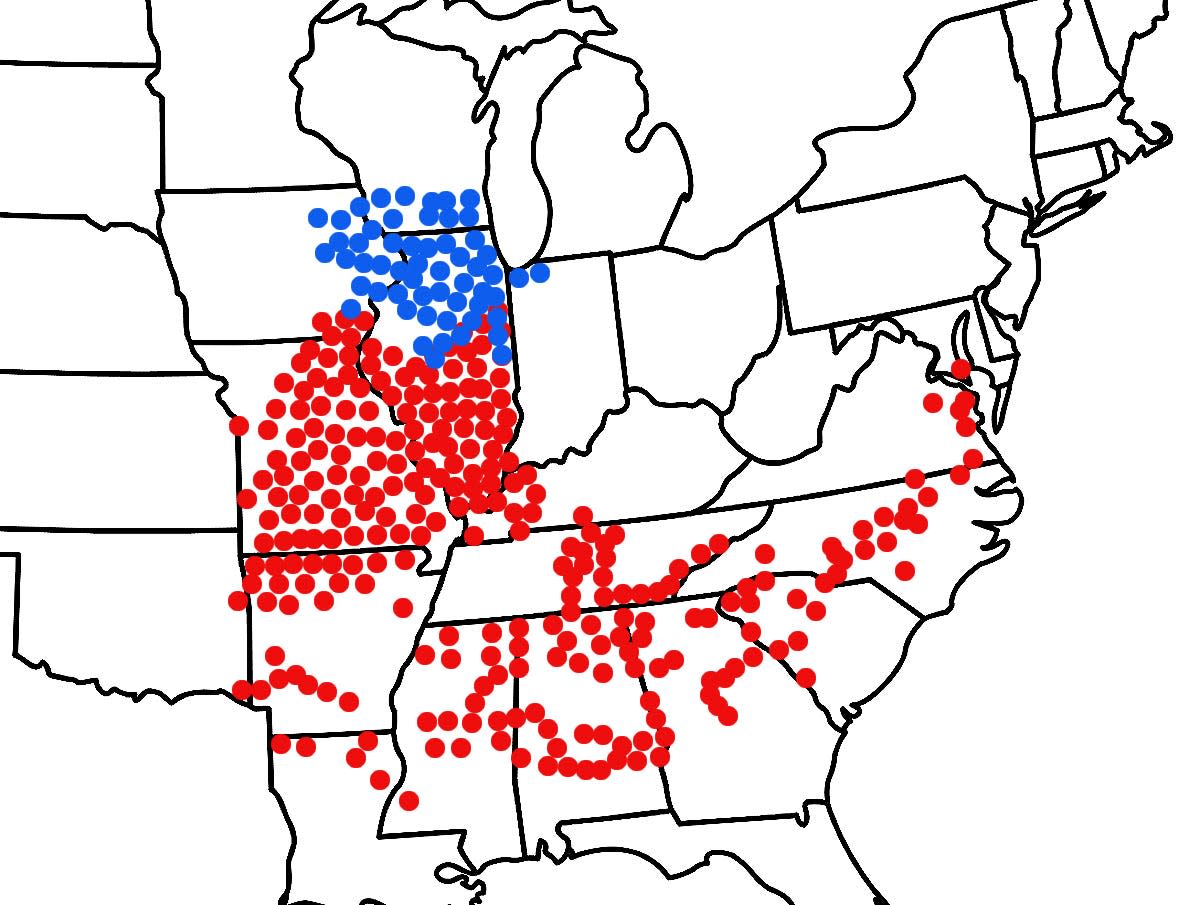'Not going to be a big area': 221-year cicada cycle will happen a few hours west of Ohio
Social media has been abuzz with rumors about a double cicada emergence this coming spring so rare that it only happens once every 221 years.
The posts are true, but the phenomenon will take place a couple hundred miles west of the Buckeye State, according to Joshua Dyer, director of the Crawford Park District.
"Central Illinois would be the place to go to try to possibly see and hear both broods at the same time," Dyer said.
Cicadas are winged insects with red eyes that spend most of their lives underground, emerge to mate, and then die.
Some species emerge every year, others after 13 years, and the rest after 17 years.
Ohioans saw cicadas emerge in 2016 on the eastern half of the state, and in 2021 along the southwestern corner of the state.
'Not going to be a big area where they're going to overlap'
Because of their lifecycles, all three types of cicadas are only above ground at the same time once every 221 years.
The last time that happened was 1803, an event so historic that the BBC has even published an article about it for readers in the United Kingdom.
That article explains that, throughout North America, there are several different populations — called broods — of each type of cicada.
The cicadas this year are expected to crawl from the ground in late April or early May.
Brood XIX (19) of the 13-year variety of cicada will emerge in portions of Missouri, Illinois, Kentucky, Virginia, Arkansas, Tennessee, Louisiana, Mississippi, Alabama, Georgia, North Carolina and South Carolina.
Brood XIII (13) of 17-year cicadas will emerge from parts of Wisconsin, Iowa and Illinois.
"There's not going to be a big area where they're going to overlap," Dyer said.
Ohioans can drive a few hours to the brood overlap zone
Scientists will be eagerly watching this spring's emergence to see where the two broods coincide, according to Dr. Gene Kritsky, a renowned science author and biology professor at Mount St. Joseph University.
"The overlap zone between the two broods is very narrow and not easily described," Kritsky said.

Since the broods have such long life cycles, entomologists only get to see them a few times during their careers.
Ohioans willing to drive a few hours this spring will have the chance to experience a rare emergence that many entomologists have been waiting for their entire lives.
"A good likely location is in Sangamon County between the northern county line south to the extreme northern outskirts of Springfield northeast into Logan County midway between Lincoln and Mount Pulaski," Kritsky said.
Phone app will help people track this spring's cicadas
Kritsky has followed North American cicadas closely throughout this life and this winter published his third book on the insects, "A Tale of Two Broods: The 2024 Emergence of Periodical Cicada Broods XIII and XIX."
He also owns and operates the website CicadaSafari.org, which is packed with information about the insects.
A few of the lessons on his website help people learn the difference in the broods that will emerge this spring.
"Generally, the presence of the Magicicada tredecim tells you it is Brood XIX," Kritsky said. "The absence of that species will tell you that you are in Brood XIII."
Curious cicada chasers can also download and use the free CicadaSafari app, which Kritsky operates.
"It was extremely useful in mapping Brood X in 2021," Kritsky said.
ztuggle@gannett.com
419-564-3508
This article originally appeared on Cincinnati Enquirer: Two broods of cicadas will emerge together this spring in Illinois
